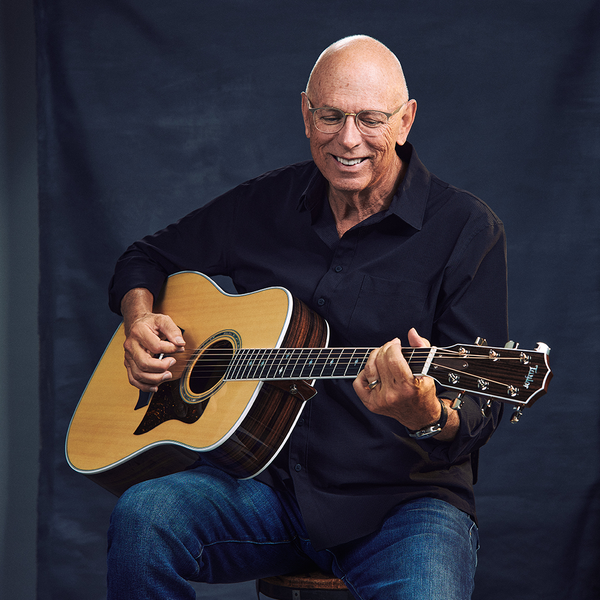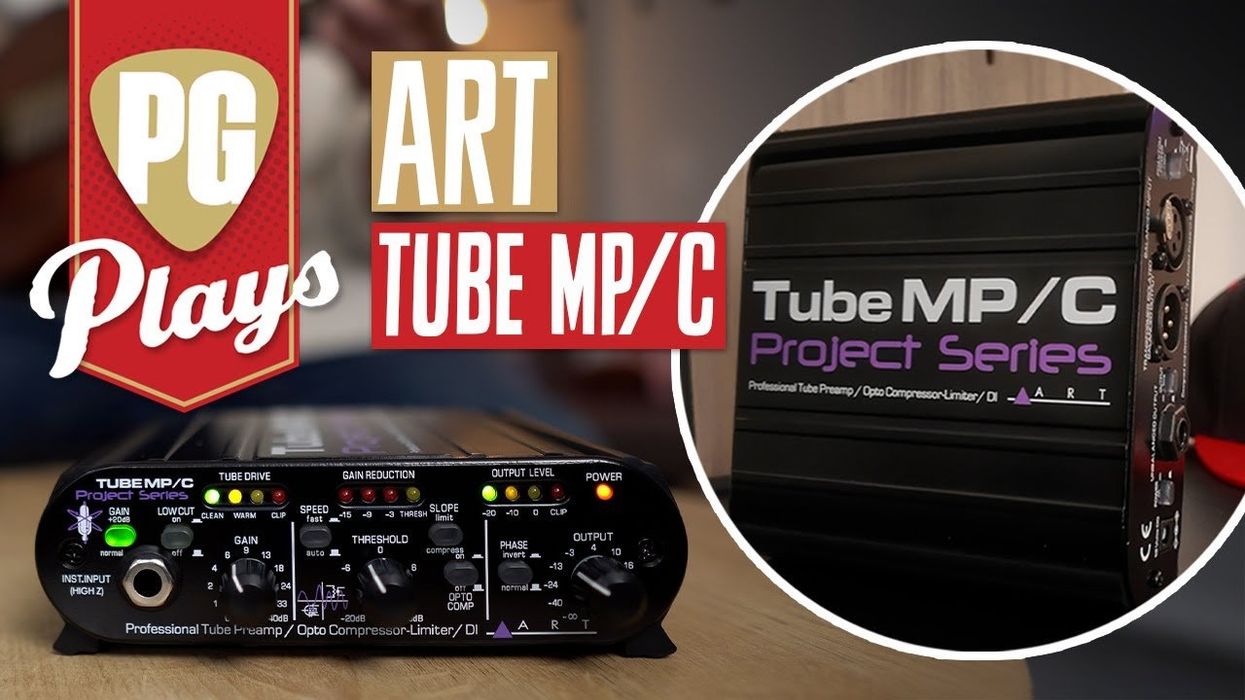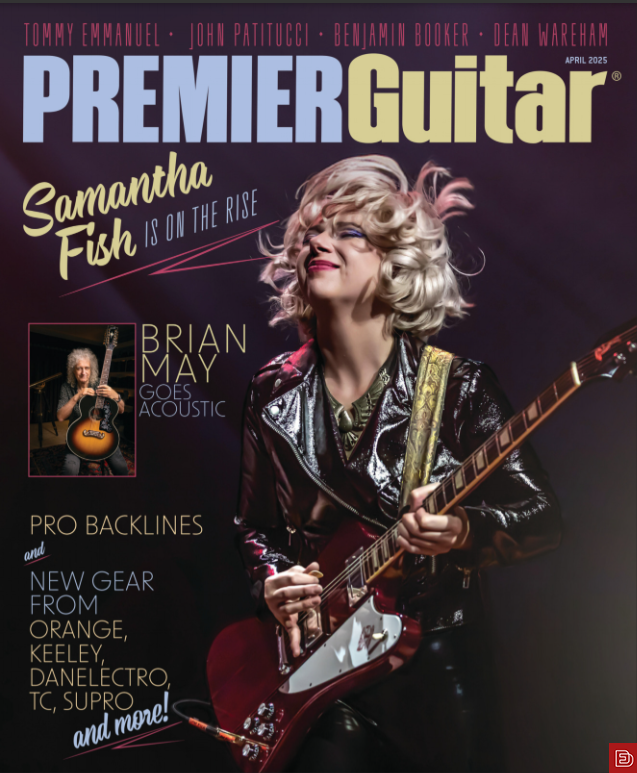The friendly skies may seem welcoming to human passengers, but a guitar might not find air travel quite as accommodating.
The ins—and especially the outs—of carrying a guitar on commercial flights, with tips and horror stories from Dave Davies, Kaki King, Tortoise’s Jeff Parker, and others.
A few months back, I was booked to perform at a festival in England. I always fly with my guitar in a gig bag and put it in the overhead bin, so I expected that I would do the same on this trip. About two weeks before the festival, I received an email from the organizer letting me know that my airline, British Airways, had created a new policy that no longer allows guitars in the cabin. I've taken my guitar on British Airways a number of times in the past and never had a problem, so this took me by surprise.
Sure enough, there it was on their website: "Guitars are not accepted in the cabin as hand baggage as they are too big for the available stowage space." And, to make it worse: "We cannot accept any guitar in a soft case as we want to ensure your instrument arrives safely." Since I don't own a flight case, it looked like my guitar wasn't making the trip.
I was lucky enough to be notified in advance and was able to make plans to have the festival rent an instrument for me, but I got to wondering what could have happened had I not been so lucky. I didn't have to wonder long, because on December 31, Dave Davies of the Kinks tweeted, "I'm really disappointed that @British_Airways is not allowing me to bring my guitar onboard with me as I always have and has made me check it as luggage for extra 69 quid—I traveled BA all the time back & forth from London to New York—next time might fly a different airline."
It seemed surprising to me that this would happen to someone like Davies. Of course, guitarists have spent years stressing out about what might happen to their guitars on flights. His story was just another one of a seemingly endless supply of stories about the problems guitarists run into traveling with their instruments. I decided to reach out to Davies and a few fellow guitarists who are professional travelers—all of whom were eager to share their thoughts and experiences—to try to get some insight into how they manage to lug their guitars around on flights and keep them safe.
Loss and Damage
Davies explained that being forced to check his guitar was completely unexpected. "I've been flying with British Airways for 15 years. They've always been accommodating. Last year on November 26, I flew back from Newark to London, and they were really accommodating. I managed to put the guitar quite easily in the overhead. [Then, in December] I got a flight to come back to New York. I went to Heathrow [Airport, in London] and they said I have to put the guitar in the hold and I said, 'This has never happened before. You've always been accommodating.' They said since October, they've got a new policy of no guitars onboard."
"It's not just lumber bloody wood. These are crafted guitars and each one is different. They're very personal things. I don't think they understand what's at stake for musicians." —Dave Davies
While his Gibson Nighthawk wasn't damaged, this experience really struck a nerve for the Kinks guitarist. Early in his career, Davies was flying with a cherished Guild, a guitar that formerly belonged to George Harrison, when the guitar was lost forever. Later, in the 1990s, his Ovation acoustic was smashed—an incident that inspired his record, Fragile. At this point, Davies is not interested in letting his guitar out of his sight, and says, simply, "I can't put my guitar in the hold."
Davies is, of course, just one of many guitarists who have had problems with loss and damage. All the guitarists I talked to shared at least one story about having problems checking their instruments. Tortoise's Jeff Parker told the tale of his vanished 1983 Gibson ES-335. "My guitar got lost on an airline called Vueling [a budget carrier, based in Spain]. It was early in the morning and I didn't feel like having the argument. I was like, 'Whatever, man, just check it.' So we got off the plane and the guitar just didn't show up.
"We're doing one-nighters, so we're in a different place every day. We're flying around, and for three or four days I'm playing on borrowed instruments. I started to freak out. I had the feeling that I was standing on a seashore and I could see my guitar getting washed out to sea."
Parker was fortunate enough to be able to harness the power of social media to successfully put pressure on the airline to find his guitar. "In an act of panic, I posted a bunch of pictures I had of this guitar on Facebook and on Twitter, and I was like, 'I don't think my guitar's gone, but if anybody sees it, this is what it looks like and it's mine.' It kind of went viral. The cats from Wilco re-tweeted it, so that's immediately like a million people that know about it. Then, immediately after that, I got it right back. It took a few hours and they found it and I got it, so that worked."
Kaki King has a few lost guitar stories to share, but that's not the worst of her travel tales. Once shortly after boarding the plane, King saw her Ovation acoustic guitar broken in its hardshell case. "I watched the guitar on the belt," she says. "I watched the guitar case fall and I shrieked! I get my guitar and, low and behold, I ended up with a giant hole in the back of the guitar. Fortunately, I filed a complaint and they did pay for the damage."
Even when traveling with a flight case, checking a guitar still does not mean the instrument is 100-percent safe from damage. Gorguts and Dysrhythmia guitarist Kevin Hufnagel had his custom-built SG-style guitar damaged by clumsy handlers inspecting his instrument. "I noticed there was this dent on the back of the guitar neck that wasn't there before," he recounts. "When they were going through my guitar case and they put the strap away, they didn't put the strap locks away properly, and when they put the guitar back in the case, they pressed the strap locks into the wood."
United Breaks Guitars
Songwriter Dave Carroll turned the destruction of his Taylor by United Airlines into notoriety with his song "United Breaks Guitars," with more than 17 million YouTube views, and a spin-off book about his resulting social-media odyssey.
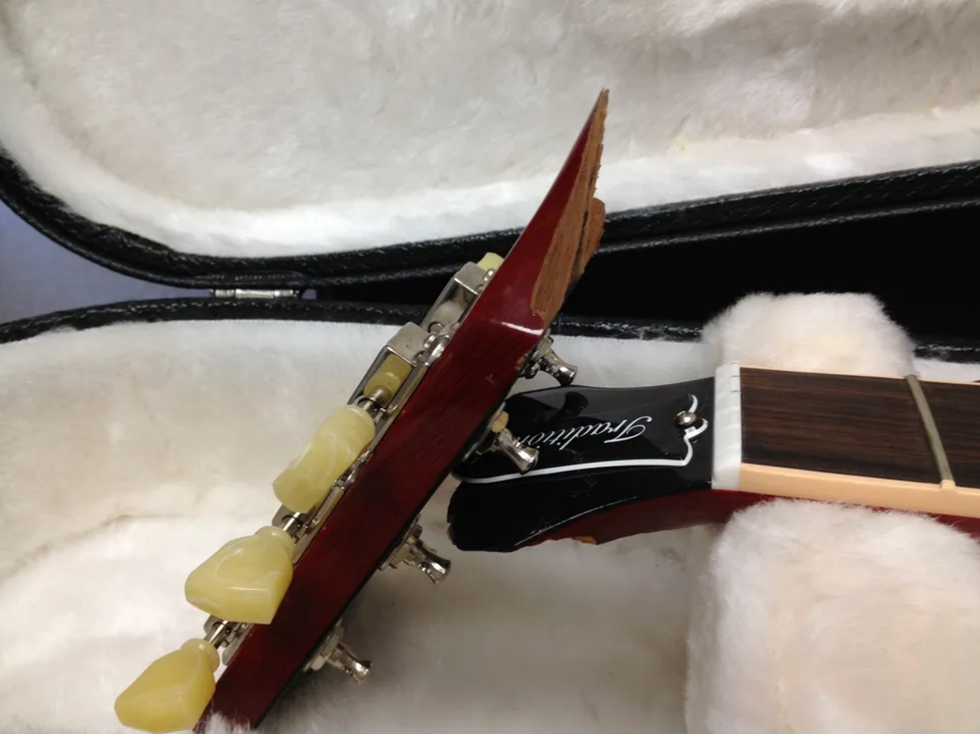
Oh oh! Even in a hardshell case, your beloved axe can suffer extreme damage if it's treated carelessly.
Keeping It Close
Given these stories, it's no surprise that so many guitarists prefer to carry their guitars with them. Parker continues to bring his guitar as a carry-on in a gig bag, preferring to play the odds that he'll be able to keep his instrument with him under his own watch. "It's much more comforting to have it with me and not have to worry about it," he says. "Ninety-eight percent of the time it fits on the plane and there's no reason for them to not let you carry it."
After too many close calls with his guitar being lost or damaged, Hufnagel switched from using a gig bag to a flight case, but is still persistent about bringing his guitar as a carry-on, since his case is form-fitting and still able to fit in overhead bins—a strategy he recommends. "If it's shaped for your guitar so it isn't any larger than it needs to be, at least if you have to check it, it's hopefully not going to get broken and they are easier to fit in the overhead." Peace of mind goes a long way for Hufnagel, and he's willing to go the distance to bring his guitar onto the flight. "I never voluntarily check it unless they give me a big stink. Even if they put a gate checking tag on, I'll still walk right past and get right on the plane with it. There's never a problem. The flight attendants are always super helpful. It's normally just the baggage claim people that aren't."
Here in the U.S., the Federal Aviation Administration understands that musicians want to carry their instruments onboard and in 2015 created guidelines for all airlines that says instruments must be allowed onboard if there is space in the overhead bins. The U.S. Department of Transportation has even created a website featuring information about this rule, as well as tips and resources to help musicians traveling with their instruments.
The rule states: "An air carrier providing air transportation shall permit a passenger to carry a violin, guitar, or other musical instrument in the aircraft cabin, without charging the passenger a fee in addition to any standard fee that carrier may require for comparable carry-on baggage, if (A) the instrument can be stowed safely in a suitable baggage compartment in the aircraft cabin or under a passenger seat, in accordance with the requirements for carriage of carry-on baggage or cargo established by the Administrator; and (B) there is space for such stowage at the time the passenger boards the aircraft."
The guitarists PG spoke with were unanimous in their agreement that the FAA rule has improved the experience of flying with a guitar within the U.S. However, since the rule specifies that there must be room on the flight for the guitar, it is very important that guitarists show up to the gate as early as possible. Some airlines will allow passengers to pay for advance boarding, which can essentially guarantee there will be room, but on others, guitarists just have to find their way to the front of the line.
International Plans
Outside of the U.S., musicians still have to navigate airline policies that can be difficult and confusing to understand, and are often simply unclear. There are no international rules in place to regulate the way airlines handle instruments, so guitarists often risk the safety of their guitars as they travel.
Mary Halvorson, who tours heavily in Europe, reflected on this confusion and ambiguity: "Even within the same airline, one employee could tell you 'yes' and one could tell you 'no.' One person could really try to help you and another person could try and make you not get on the flight. They can be nice if they want to."
"Let's get down to what really happens: I put it on the plane and I say a little prayer and I just hope for the best because you never, ever, ever, ever know what is going to happen." —Kaki King
In addition to this confusion, there is also the reality that sometimes guitars just don't fit. Often, when traveling on short flights using small planes, the overhead bins are simply not large enough for a guitar and there might not be a closet available. In those cases, there is no argument to be made and a guitar must be checked.
Halvorson tired of putting her guitar at risk in a gig bag and recently commissioned a custom guitar. Her new instrument, built by luthier Flip Scipio, features a neck that is quickly removable and packs up into a case that is the size and shape of regular luggage. "I saw a lot of bass players traveling with neck-off basses and I thought, 'Why can't I do that with a guitar?' Some guitars do it, but it's not nearly as common as basses. Since I have it in this custom-built hardshell suitcase, I just check it as a regular bag." For Halvorson, this has helped her make sure her guitar is safely packed, and she believes it also avoids loss. "I feel like often when instruments get lost, it's because you've had to check it as oversized and people get confused."
Stress Relief
In addition to increasing her instrument's security, Halvorson's new system has improved her travel experience. "It's been great," she says. "I've taken it on probably a hundred flights. I love the guitar and I love playing it, and my stress levels have been reduced with this new system."
While she has many strategies of her own to offer, Kaki King realizes that luck is a big part of the game. "Let's get down to what really happens: I put it on the plane and I say a little prayer and I just hope for the best because you never, ever, ever, ever know what is going to happen," she says.
Despite her past troubles, King strongly advocates that taking measures to maintain a positive attitude and stave off travel anxiety is the best strategy guitarists can take. "I think anxiety reduction is just as important as potential damage reduction," she offers. "The anxiety around flying is so much worse than the reality of flying with an instrument. Ninety-nine percent of instruments don't get destroyed. [Airlines are] used to it. They're not complete nincompoops the entire time. So I would just say, try to have a little less fear around it. I've been traveling 15 years and I've only had one guitar get lost on the day of the show. Nothing ever gets lost; it just takes a while to find it. It's misplaced. Or they know where it is and it's just not where you are. So, it's not like it's going to be gone forever."
Given that every guitarist PG spoke with had bad flight stories to share, there are obviously improvements that can be made. Parker believes they need to happen on a fundamental level. "They should just respect the fact that instruments are fragile and, for professional musicians, it's their livelihood. Musicians should have priority taking their instruments on planes."
Davies echoes that thought. "It's not just lumber bloody wood. These are crafted guitars and each one is different. They're very personal things. I don't think they understand what's at stake for musicians. Working musicians can't always afford to go business class or first class or buy their own air flight. You've got to cut 'em some slack. We're not talking about huge pieces of equipment. These guitars fit quite snugly in the overhead."
Halvorson hopes that airlines would continue to work toward a clear set of guidelines to make this process easier. "For me, it would be much better if there was just a clear policy across the board for all airlines, all flights," she observes. "Even if the policy was 'no,' the worst part is not knowing and the anxiety of what might happen. It could be improved by any kind of clear information. It would at least be definitive, one way or the other."
[Updated 9/15/21]
- Intelligent Design? - Premier Guitar ›
- Tech Tales: Packing Your Guitar for Air Travel - Premier Guitar ›
- How to Build a Flight-Friendly Pedalboard - Premier Guitar ›
This wonky Zim-Gar was one of many guitars sold by importer Gar-Zim Musical Instruments, operated by Larry Zimmerman and his wife.
The 1960s were strange days indeed for import guitars, like this cleaver-friendly Zim-Gar electric.
Recently I started sharing my work office with a true gem of a guy … one of the nicest fellas I’ve ever come across. If you’ve been following my column here, you might remember my other work mate Dylan, who is always telling me about new, fad-type things (like hot Honey guitars) and trying to convince me to use AI more. (What can I say, he’s a millennial.) But Steve, on the other hand, is about 10 years my senior and is a native New Yorker—Brooklyn actually, from the Canarsie neighborhood. Steve is a retired teacher and spent many years teaching in the Brownsville area of Brooklyn, and man, he has some amazing stories.
Mostly we talk about music and sports (he’s exiled here among us Philadelphia sports fans) and he’s just endlessly interesting to me. He has a huge appetite and can eat a whole pizza. When he talks, he sounds like one of the Ramones and he still has an apartment in Rockaway Beach. We both love Seinfeld and, like George Costanza, Steve knows where all the great bathrooms are across New York City. Since he’s been added to my circle (and is such a mensch), I decided I should work him into a column.
So here’s the connection: Back in the day there were many American importers, dealers, and wholesalers. A lot of them were based in New York, Chicago, and Los Angeles, but I only know of one guitar importer located in Brooklyn: Gar-Zim Musical Instruments. The company was run by Larry Zimmerman and his wife, and the couple had some success importing and selling Japanese guitars and drums. I used to see early Teisco imports with the Zim-Gar badge, which was the brand name of Gar-Zim. I’ve also seen Kawai guitars with the Zim-Gar label, but the Zimmerman’s seemed to sell cheaper and cheaper gear as the ’60s wore on, including the piece you see here.
“This build reminds me of the cutting boards I used to make in wood shop back in my high school days.”
The model name and factory origin of this guitar is a mystery to me, but this build reminds me of the cutting boards I used to make in wood shop back in my high school days. The guitar is just flat across the top and back, with absolutely no contouring or shaping. Its offset body is plywood with a thin veneer on the top and back. From a distance this guitar actually looks kind of nice, but up close you can see a rather crude and clunky instrument that offers little flexibility and playability. The non-adjustable bridge is off center, as is the tremolo. It was really hard to get this guitar playing well, but in the end it was worth it, because the pickups were the saving grace. Another example of gold-foils, these units sound strong and raw. The electronics consist of an on/off switch for each pickup and a volume and tone knob. The tuners are okay, and the headstock design is reminiscent of the Kay “dragon snout” shape of the mid to late ’60s, which is where I would place the birthdate of this one, probably circa 1966. Everything is just so goofy about this build—even the upper strap button is located on the back of the neck. It reminds me of that era when simple wood factories that were making furniture were tasked with building electric guitars, and they simply didn’t know what they were doing. So, you get oddities like this one.
Gar-Zim continued to sell guitars and other musical instruments through the 1970s and possibly into the ’80s. I once even saw a guitar with the label Lim-Gar, which is totally puzzling. I think there should’ve been a Stee-Gar designation for my new buddy Steve-o! Yes, good readers, with guitars and me, there are always just a few degrees of separation.
Dive into the ART Tube MP/C with PG contributor Tom Butwin. Experience how this classic tube-driven preamp and compressor can add warmth and clarity to your sound. From studio recordings to re-amping and live stage applications, this time-tested design packs a ton of features for an affordable price.
Art Tube Mp Project Series Tube Microphone/Instrument Preamp
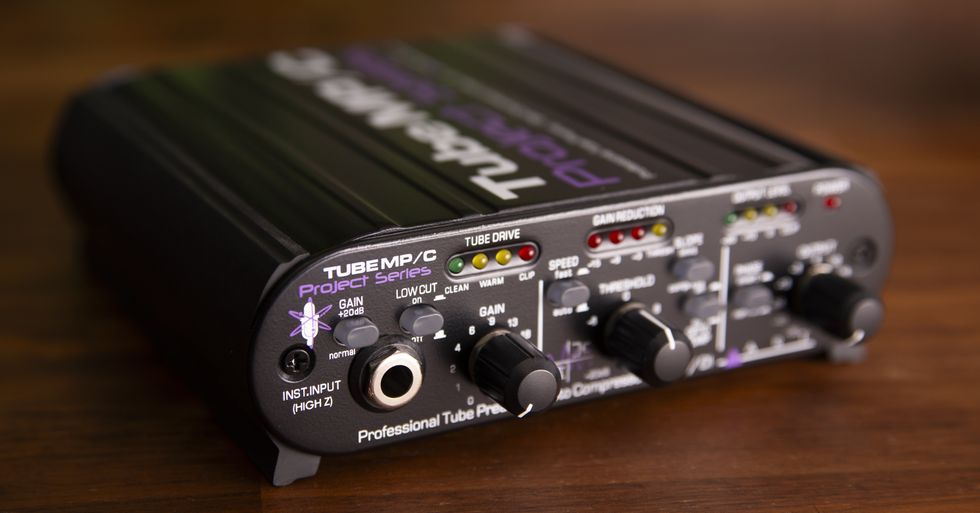
Designed in Rochester NY and originally released in 1995, the Tube MP is celebrating its 30th anniversary in 2025.
The Tube MP/C is the most fully-featured member of the Tube MP family, designed for recording guitarists and bassists. It is a tube mic preamp and instrument DI with advanced features including an optical compressor/limiter and switchable line/instrument output levels for use as a re-amping device.
In line with the MOOER’s recent expansion on the MSC range, the company is excited to announce the new MSC50 Pro, an Alder-bodied electric guitar with gloss finish, available in the new Magic Crystal color.
Featuring a roasted maple neck with a satin finish, a rosewood fingerboard for playing comfort, 22 frets, and a standard C shape, the guitar has been designed with classic guitarists in mind. This is beautifully emphasized with its beautifully resonant tonewoods, all while still being balanced perfectly with style and comfort of use.
The MSC50 Pro features all of the industry-standard features you might expect from such an impressively affordable guitar, such as bolt-on construction, a bone nut, and a dual-action steel truss rod. However, other features make the electric guitar stand out among others at a similar price point, such as its MTN-3LC locking tuning pegs, beautiful Abalone dot inlay, and, of course, its previously mentioned tonewood selection.
In order to capture the MSC50 Pro's balanced tonal profile, MOOER's luthiers have built it with three perfectly balanced pickups: the MSC-II N single coil neck pickup, the similar MSC-II M single coil middle pickup, and, best of all, the MHB-II B bridge humbucker. When these carefully chosen pickups are combined with the guitar's MPW 2-point chrome bridge, guitarists can make the most out of its tonal versatility, all while maximizing tuning stability.
To ensure that the guitar is suitable for a wide range of genres, both softer and higher-gain examples, the MSC50 Pro has a convenient coil split switch built into it, giving users better resonance control. Of course, this is also combined with a classic tone dial, a standard 5-way tone switch, and a volume control dial.
Overall, the MSC50 Pro reminds users of MOOER guitars that the company has never forgotten about its roots in classic-style guitars. Yes, the company is continuing to develop innovative guitar technology in other areas, but this electric guitar also represents a grounded approach, keeping things classic, sleek, and tonally versatile–all at a reasonable price point.
Features:
- Alder Body with a Gloss Finish
- Available in the Magic Crystal color
- Standard C-shaped roasted maple neck with a Satin finish
- Bolt-on construction
- 22-fret rosewood fingerboard
- Abalon dot inlay
- MTN-3LC locking tuners
- Bone nut
- Dual-Action Steel Truss Rod
- 12" radius
- 09-46 strings
- 25.2" scale
- MSC-II N Single Coil neck pickup, an MSC-II M Single Poil middle pickup, and an MHB-II B Humbucker Bridge Pickup
- Chrome guitar strap pin
- Coil Split Switch
- 5-Way Tone Switch
- Volume and tone dials
- MPW 2-Point chrome bridge
The MSC50 Pro will be available from the official distributors and retailers worldwide on 13th May 2025 at an expected retail price of USD419/Euro399/GBP339.
MOOER Expands Its Popular MSC Guitar Line with the MSC30 Pro and MSC31 Pro
MOOER has never shied away from innovation when it comes to its guitars. However, with the recently announced release of the MSC30 Pro and MSC31, the company reminds us that, sometimes, true innovation lies in mastering and enhancing a proven classic. With this philosophy, MOOER introduces two new exciting additions to their beloved MSC series of electric guitars.
Both the MSC30 Pro and MSC31 Pro continue MOOER’s philosophy of creating affordable guitars, but without sacrificing quality or performance, thanks to the poplar bodies and flame maple tops. Some guitarists will be drawn to the bright tones of the MSC30 Pro’s maple fingerboard, whereas others will prefer the warmer resonance of the MSC31 Pro’s rosewood alternative.
Each guitar features sturdy bolt-on neck construction, dual-action steel truss rods, bone nuts, and MTN-1 chrome tuning pegs (with the BK upgrade being reserved for the MSC31 Pro), ensuring tuning stability and comfort at all times.At the heart of both models are MOOER’s versatile MSC pickups, comprising the MSC-1N single-coil neck pickup, the MSC-1M single-coil middle pickup, and the powerful MHB-1B dual-coil humbucker at the bridge. Further complemented by a versatile 5-way pickup selector and exclusive coil split switch, players can effortlessly switch between a wide palette of tones, such as pristine cleans ideal for jazz or blues, or high-gain tones for heavier genres.
Tremolo support is also provided through both the guitar's bridges, with the MSC30 Pro featuring an MTB-1 2 Point Tremolo bridge, and the MSC31 Pro boasting an exclusive black MTB-1 BK 2 Point Tremolo bridge. Both bridges guarantee guitarists the ability to use tremolo bars in their guitar performances, without compromising the integrity of tuning stability.
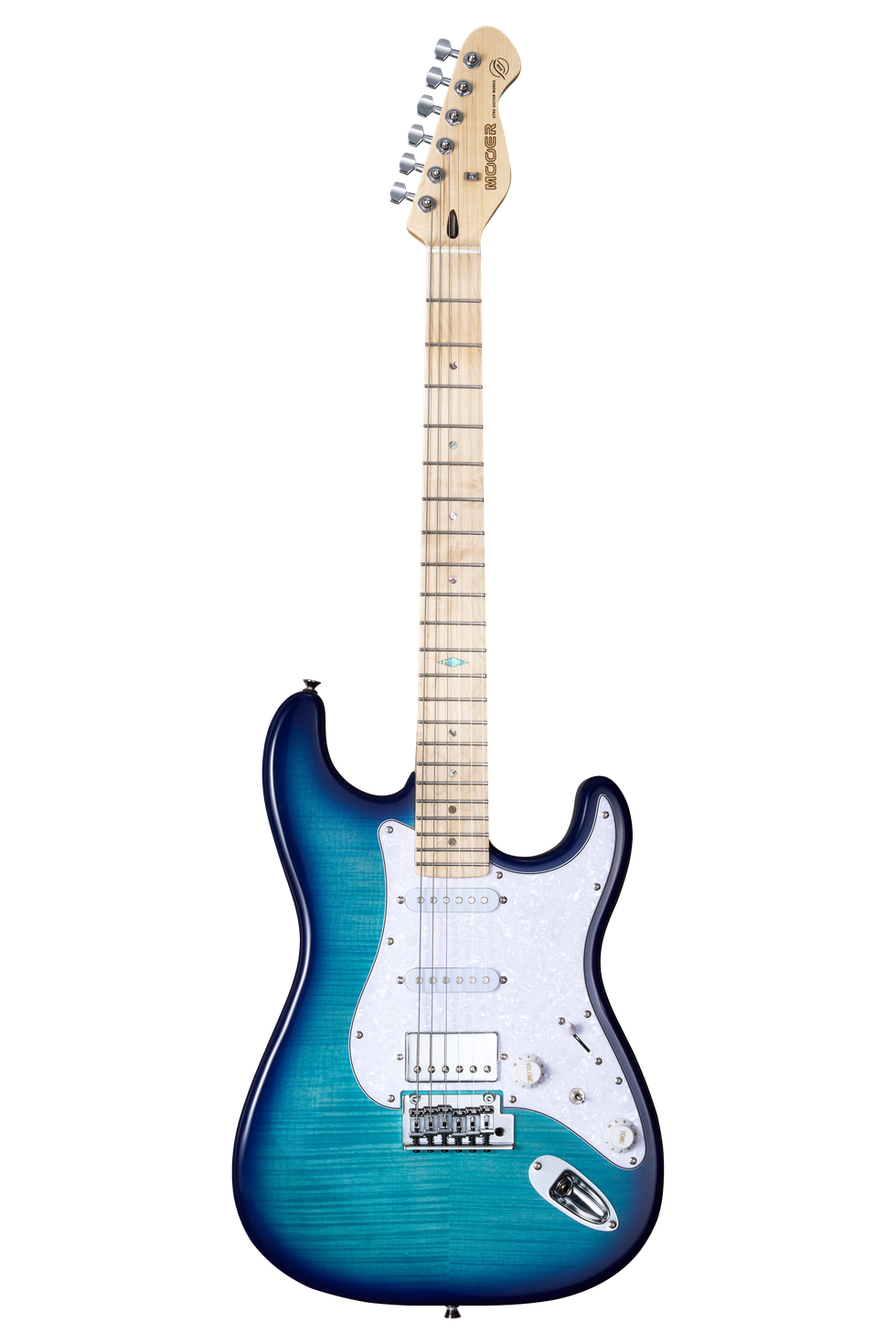

Both guitars come with a selection of vivid new colors, complementing the guitar’s hardware with undeniable visual appeal. The MSC30 Pro is available in the classic finishes of Sunset Red, Lake Blue, Lemon Green, and Rose Purple. Meanwhile, the MSC31 Pro boasts its own selection of glossy finishes: Grey Burst, Blue Burst, Green Burst, and Purple Burst.
Overall, the MSC30 Pro and MSC31 Pro solidify MOOER’s commitment to combining quality craftsmanship, affordability, and versatility, giving guitarists of all levels the chance to own instruments that genuinely inspire.
Features
MSC30 Pro:
- Classic S-style design
- Poplar body with flame maple top
- Maple fingerboard
- Maple neck with satin finish
- Bolt-on neck construction
- 22 nickel silver frets, Abalone dotted inlay
- Coil split switch and versatile 5-way pickup selector
- MSC-1N/M single-coil pickups and MHB-1B humbucker
- 25.5" scale
- MTN-1 Chrome tuning pegs
- Available in gloss-finished Sunset Red, Lake Blue, Lemon Green, and Rose Purple
- Volume and tone dial
- Chrome strap pin
MSC31 Pro:
- Classic S-style design
- Poplar body with flame maple top
- Rosewood fingerboard
- Maple neck with satin finish
- Bolt-on neck construction
- 22 nickel silver frets, White Shell dotted inlay
- Coil split switch and versatile 5-way pickup selector
- MSC-1N/M single-coil pickups and MHB-1B humbucker
- 25.5" scale
- MTN-1 BK tuning pegs
- Available in gloss-finished Grey Burst, Blue Burst, Green Burst, and Purple Burst
- Volume and tone dial
- Chrome strap pin
The MSC30 Pro and MSC31 Pro will both be available from the official distributors and retailers worldwide on 2nd April 2025.
MOOER Gives Bassists What They Want with the New MBJ410 and MBJ420 Electric Bass Guitar Models
For 15 years, MOOER has built a critically acclaimed name for itself thanks to its cutting-edge electric guitars, pedals, and accessories. While the company is no stranger to building electric bass guitars, this has not been its focus for some time, hence why so many bassists are excitedly anticipating the release of the MBJ410 and MBJ420 electric bass guitars.
Both the bass guitars sport glossy Poplar bodies, keeping the price point affordable but without limiting their tonal resonance and versatility, whereas the MBJ420 holds the additional bonus of being built with a Poplar Burl top. Complete with roasted maple C-shaped necks (also accented with a gloss finish) as well as Roasted Maple fingerboards and White Shell dot inlays, the necks are designed to offer as much comfort as possible–a high priority for bass guitarists.
A 34" fret scale further enhances practicality for bassists, as does the neck's 12" radius. Strings are available in .045, .065, .080, and .100 gauges, providing something for any type of bass style - whether slapping, plucking, or picking techniques are preferred.Thanks to the industry-standard components of a dual-action steel truss rod and bone nut, the tuning and resonant stability of both the MBJ410 and MBJ420 models are also of a high standard. However, this is accentuated further by the guitars' strong and reliable BTN-1 tuning pegs, essential for heavier-gauge bass strings.
The tonewoods and structural integrity of the MBJ-series electric bass guitars wouldn't be complete without the accompaniment of the guitar’s two single-coil JB-style pickups. Combined with the MOOER BSC-2 bridge, both bass guitars have been carefully designed to amplify bass resonances excellently, complemented even further by their simple but effective tone dials. Two volume controls are also built in, ensuring that bassists can customize their sonic output to have the perfect tonal blend.
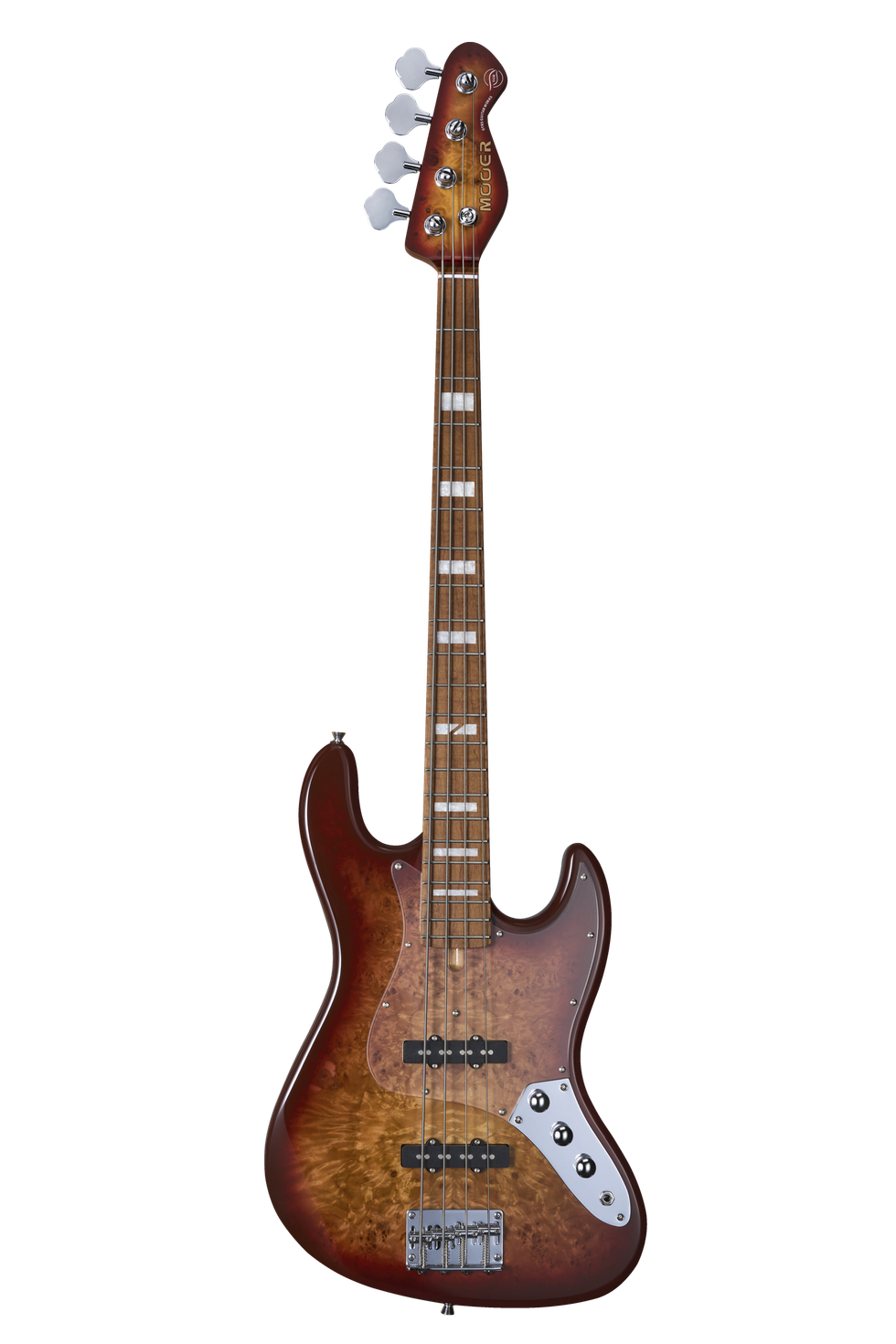
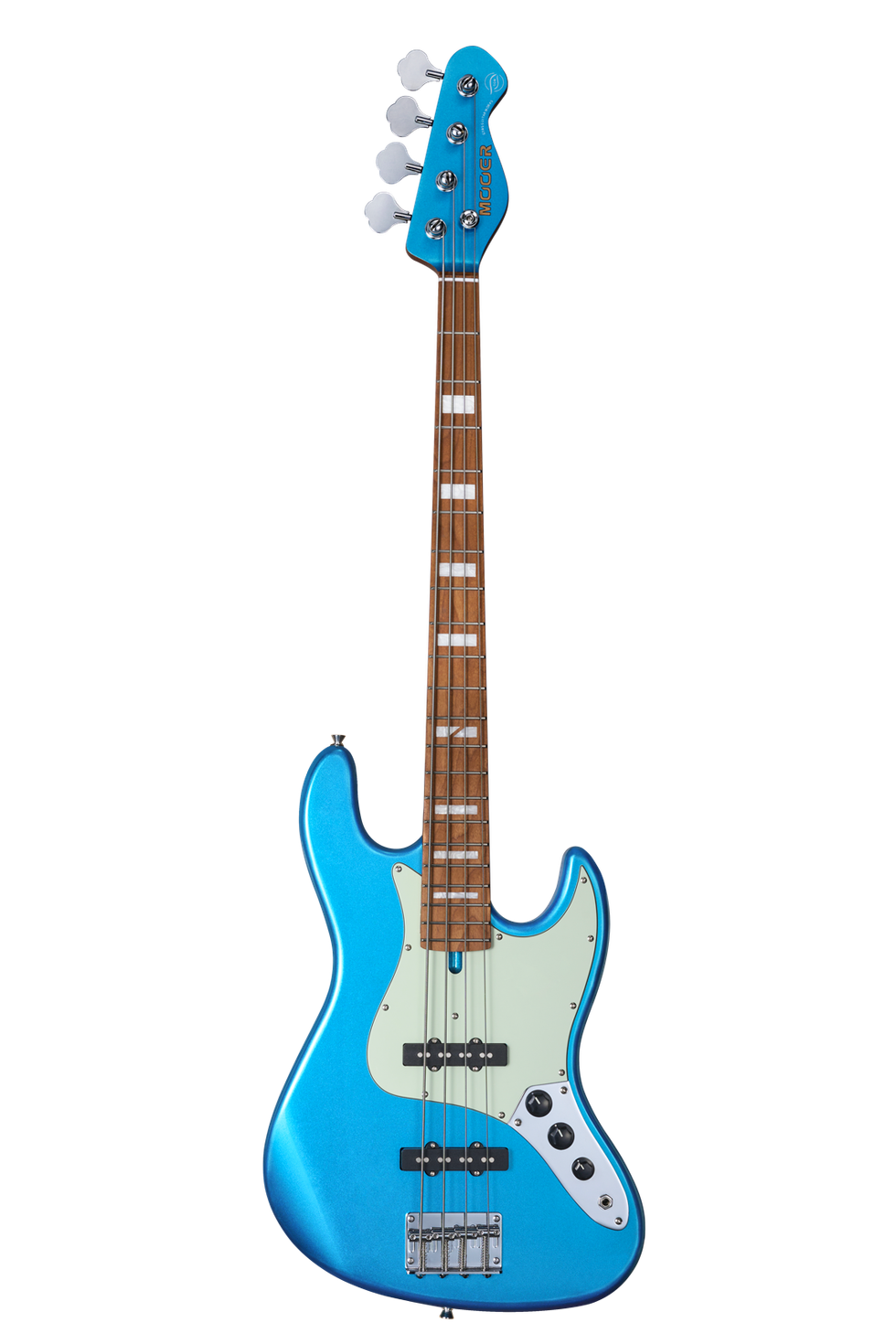
In terms of standout features, the main difference between the two bass guitars is the MBJ420's added poplar burl top, but most notably, the color selections. For the MBJ410, the bass guitar is available in Gunmetal Gray, Metal Green, and Metal Blue, perfectly suiting the stages of higher-gain performances. In contrast, the aesthetics of the MBJ420 are more classic, purchasable in Red Burst, Blue Burst, and Tobacco Burst. Finally, both guitars are topped with a chrome strap pin, enabling stylish and energetic live performances.
Overall, bassists will no doubt be excited to see MOOER return to electric bass guitars with the MBJ410 and 420 models. Of course, electric guitars will remain the focus for the company, but the release of these two new products is a reminder of just how accommodating MOOER is for its wide audience of musicians.
Features
- Electric bass guitar built with gloss-finished Poplar body (MBJ420 also features a Poplar Burl Top)
- Roasted maple C-shaped neck with a gloss finish
- Roasted maple fingerboard
- White Shell dot inlay
- 12” neck radius
- MOOER BSC-2 bridge
- VBJ-1 and VBJ-2 Single Coil pickups
- MOOER BTN-1 tuning pegs
- Bolt-on construction
- Bone nut
- Dual-action steel truss rod
- Pre-installed strings available in .045, .065, .080, and .100 gauges
- 21 frets
- 34"fret scale
- Colors available in Gunmetal Gray, Metal Green, and Metal Blue (MBJ410), and Red Burst, Blue Burst, and Tobacco Burst (MBJ420)
- Chrome strap pin
- 2 x volume control dials
- 1 x Tone dial
The MBJ410 and MBJ420 will both be available from the official distributors and retailers worldwide on 29th April 2025 at an expected retail price of USD319/Euro299/GBP249(MBJ410), USD399/Euro379/GBP319(MBJ420).
The Oceans Abyss expands on Electro-Harmonix’s highly acclaimed reverb technology to deliver a truly immersive effects workstation. The pedal is centered around dual reverb engines that are independently programmable with full-stereo algorithms including Hall, Spring, Shimmer and more. Place these reverbs into a customizable signal path with additional FX blocks like Delay, Chorus, Tremolo, or Bit Crusher for a completely unique soundscape building experience.
Electro-Harmonix has paved the way for powerful, accessible reverbs since the release of the original Holy Grail and now we’ve pushed the envelope deeper with the fully-equipped Oceans Abyss. Featuring a customizable signal path with up to 8 effects blocks, the Oceans Abyss can be configured as individual reverb, modulation, EQ, delay, bit crusher, saturation or volume effects, or as countless combinations for incredibly creative effect shaping. From a simple Spring reverb to a lush stereo field featuring stereo hall and shimmer reverbs, chorus, delay, overdrive, and tremolo, you can go from surf to shoegaze instantly, without breaking a sweat.
Deep parameter editing is accessible via the high-visibility OLED display with multiple graphical views and easy-to-read designs. Expression/CV control over nearly every parameter gives artful control of your effects and dynamics. Fully-stereo I/O plus an FX Loop allows for use with any instrument, recording set up, or live rig. 128 programmable presets via onboard footswitching or MIDI ensure perfect recall in all performance situations. MIDI IN/OUT ports with MIDI IN support of PC, CC, and Tempo Clock expand the already immense talents of the Oceans Abyss. Connect with UBS-C to Windows or Mac for effects editing, preset management, and more with the free EHXport™ app (coming soon).
- Two Stereo Reverbs available at once, each fully pannable in the stereo field
- 10 reverb types to choose from: Room, Hall, Spring, Plate, Reverse, Dynamic, Auto-Infinite, Shimmer, Polyphonic, Resonant
- Additional FX blocks: Delay (Digital, Analog and Tape emulations), Tremolo, Chorus, Flanger, Phaser, Graphic EQ, Saturation, Bit Crusher, External FX Loop, Volume
- Create custom signal path routing with up to 8 effects blocks. Two blocks may be re-verb, the rest may be any of the additional FX blocks.
- Infinite reverb sustain with the press of a footswitch
- Stereo Audio I/O
- Stereo FX Loop routing on TRS Jacks
- Dual action footswitches allow for momentary or latching use
- Easily enable or disable tails
- 128 fully customizable presets
- All controls can be saved to presets
- Dive deep into global and preset settings to set up Oceans Abyss for your specific needs
- Illuminated slide pots and buttons
- High-visibility OLED graphical display
- Multiple graphical views: Signal Path, Performance, Settings, Physical, Explorer
- Easy-to-navigate menu system
- Ergonomic NavCoder knob allows rotary and directional navigation through menus
- EXPRESSION / CV input to control nearly any parameter in any FX block
- Footswitch input allows for adding up to three external footswitches, each assigna-ble to a number of functions
- MIDI In and Out. MIDI IN supports PC, CC (over nearly every available parameter), and Tempo Clock
- USB-C port to connect to Windows or Mac and interface with EHXport™ app (coming soon)
- 96kHz / 24-bit sample rate conversion
- Supplied with 9.6VDC / 500mA power supply


